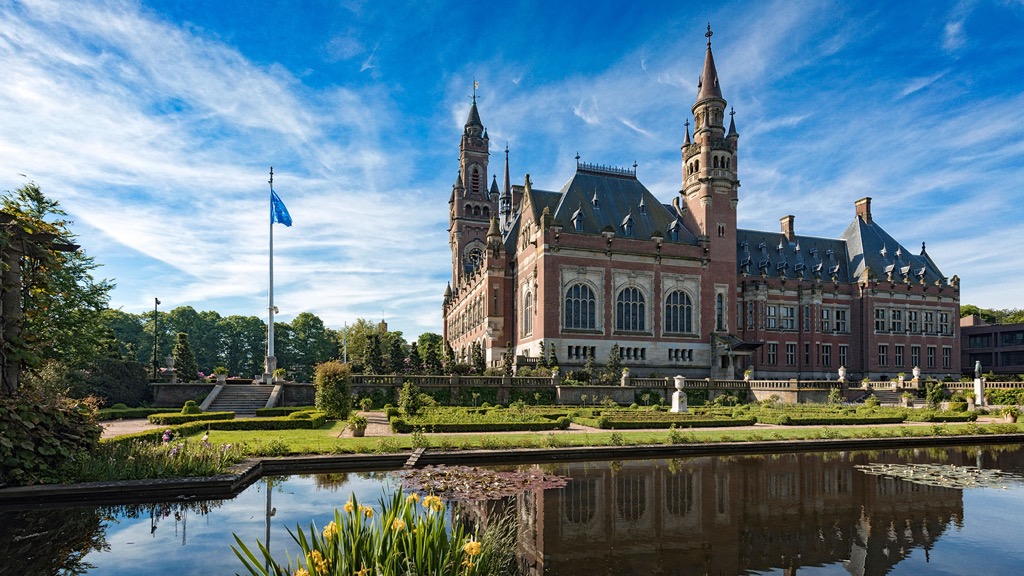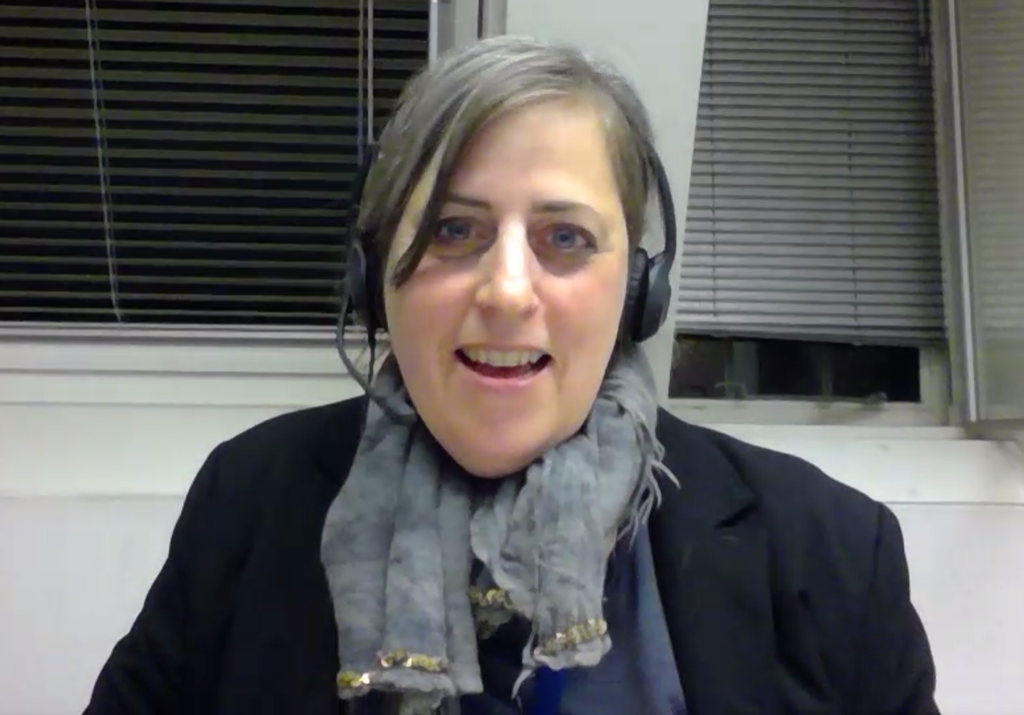
00:00 Shelley Lightburn is introduced by Jon Ippolito
UMaine's Digital Curation program.
Parallels between digital curation in cultural heritage and international law.
Background in photography and interdisciplinary humanities.
Jobs in NYU labor and cultural archives, then UN Archives and Records Management program.
At the International Criminal Tribunal for Rwanda, worked with Roméo Dallaire, author of Shake Hands with the Devil [link].
The International Criminal Tribunal for Former Yugoslavia, Kosovo Specialist Chambers.
Alumna of UMaine Digital Curation certificate.
Currently Head of Archives, Distribution and Indexing Division at International Court of Justice [link].
Established in 1945, the Court settles disputes between states and offers advisory opinions on international legal issues.
14:28 Authenticity in a criminal tribunal
Traditional judicial process expects evidence to be authentic, verifiable, with a clear chain of custody. Today digital evidence such as social media proliferates and replicates. "It's really easy to get lost in the objects."
The United Nations' International Residual Mechanism for Criminal Tribunals [link] (the "Mechanism") tracks and prosecutes war criminals.
As with the Nuremberg trials, it's important to ensure these events are never forgotten. Some fugitives remain at large 25 years after their crimes.
Lightburn curated an online exhibition [link] to explain the significance of criminal tribunals.
22:21 How was the website built? (question by Craig Dietrich, Digital Curation faculty).
25:08 Sharing evidence without tampering
How do you share one of these wooden rifles with the public without tampering with evidence? Could 3d printing such artifacts make this history more accessible?
Most dinosaur skeletons in natural history museums are casts rather than the original bones.
Nuremberg and Holocaust museums keep the memory of these events alive--especially important given the recent rise of nationalist rhetoric worldwide.
28:49 Retention of digital versus physical evidence
How do retention policies differ for digital versus physical items? (Question by Beth Sanders, US Naval Undersea Museum)
Most courses now use an electronic court ("e-court") system in which evidence is viewed on a screen.
Even digital evidence is supposed to be retained permanently, but digital evidence may be replicated across different trials.
34:18 The burden of preservation
The UN’s Mechanism for Criminal Tribunals has 4 running kilometers of evidence and 3 petabytes of data. Almost 100 years of artifacts dating from 1922 after the dissolution of the League of Nations.
Angeline Takawira at the IRMCT Mechanism has been a pioneer in digital preservation of evidence field.
36:03 Low budget and small staff?
Open source tools help, but administrative overhead can be overwhelming.
In 200 years, evidence verification will matter less than that the victims' story is told.
Standards like OAIS can be overwhelming to small cultural or historical organizations.
Curious that the most useful version for the court can end up being the digital one... (Comment by Sanders)
Classic archival theory suggesting everything is evidence can be confusing given the quick proliferation of digital media.
41:39 Can you minimize the mediation inherent in digital representations?
Lightburn developed a photographic technique using natural light to capture, among other things, a mortar shell from a 1995 Sarajevo attack [link].
44:28 Evidence on outdated platforms
The Kosovo Specialist Chambers are only now prosecuting crimes from 1999, which could hinge on evidence from obsolete mobile platforms.
Emulation is a "performative" solution that might re-create the experience of seeing a text message on a Nokia phone and other outdated electronic evidence.
49:42 Emulation and proving correlation
Reconstructing an entire operating system rather than archiving files piecemeal (Ippolito and Christiane Paul, Whitney Museum of American Art)
Euan Cochrane (Yale University) on his report Visual Rendering Matters [link]
Yale's Mellon-funded EaaSI [link] emulation-as-a-service project will soon allow users to emulate Android devices and emulate a server application that can run on your client application.
Opening up a file in another format is bad practice for extracting information, because you can't track errors. Yet organizations with small budgets and IT teams can struggle to migrate all the (say) WordPerfect files floating around their network.
The obligation for government bodies to collect "both sides."
What's the best way to preserve 3d files? (Question by Mackenzie Good, US House of Representatives)
Architecture museums may have standards, but 3d preservation is plagued by competing proprietary formats.
Research by Llach and Kaltman on emulating CAD programs [link] (reference via Cochrane).
OAIS can be impractical, and the Archangel blockchain project feels contrived. The Dutch trio of Samuel Muller, Johan Feith, and Robert Fruin imagined an archive spanning all of an administration's records, but this can be daunting in the digital age.
Perhaps this is why emulation has a historical connection to the Netherlands?
That wooden gun will probably be around in 500 years. The photo of the gun probably won't.
This teleconference is a project of the University of Maine's Digital Curation program. For more information, contact ude.eniam@otiloppij.
Timecodes are in Hours: minutes
In this interactive discussion hosted by the University of Maine's Digital Curation program, Shelley Lightburn of the International Court of Justice examines how digital evidence is impacting the judicial process.
Lightburn is the Head of the Archives, Indexing and Distribution Division at the International Court of Justice in the Hague, and an alumna of the Digital Curation graduate program. Participating in Lightburn's discussion about the impact of electronic data on the concept of the “original’ and “authenticity” were guests from the US Navy and House of Representatives, the Whitney Museum of American Art, and Yale University.
 Fingerprints, papers, and other physical artifacts can be held in the hand or examined in the lab, but immaterial bits and the technologies to display them can be easily modified and subject to technological obsolescence. These challenges can pose obstacles for courts trying to adapt to the increasing prevalence of digital evidence.
Fingerprints, papers, and other physical artifacts can be held in the hand or examined in the lab, but immaterial bits and the technologies to display them can be easily modified and subject to technological obsolescence. These challenges can pose obstacles for courts trying to adapt to the increasing prevalence of digital evidence.

Watch the entire video or choose an excerpt from the menu on this page.
Or view more teleconferences from the Digital Curation program.